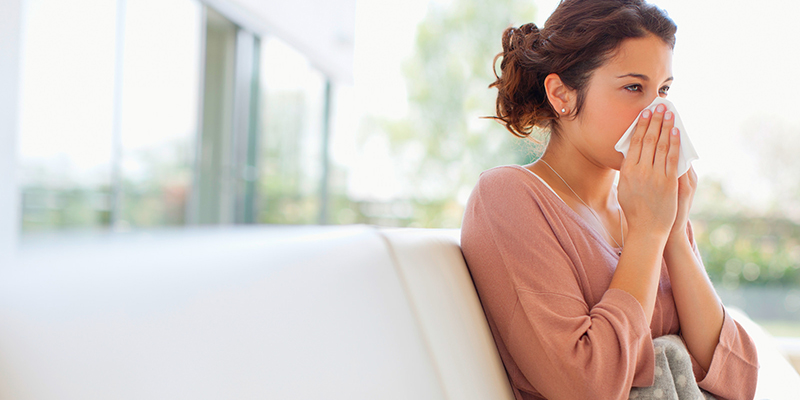
Aire Serv explains how HVAC systems can help reduce allergy symptoms by improving indoor air quality.
- Use high-quality air filters to trap allergens.
- Schedule regular HVAC maintenance to prevent dust buildup.
- Install air purifiers or dehumidifiers for added protection.
- Keep ducts clean to minimize allergen circulation.
Striving for a cleaner, healthier home environment free of allergens and pollutants? Your HVAC system can be a helpful ally in your quest to reduce indoor allergies and ensure a safe, healthy home environment for your family.
5 Ways to Reduce Allergies with the Help of your HVAC System
Step-Up Your Filter
Your HVAC recirculates indoor air to achieve the proper temperature, filtering it to remove contaminants that can dirty interior system components – and your air quality. HEPA-style filters allow for the removal of more debris, and smaller particles. A HEPA-rated air filter with a MERV rating of 10 or higher will perform best. A professional consultation prior to upgrading your filter, however, is advisable. Because your system pulls air through this filter, airflow adjustments may be necessary to avoid system damage. A knowledgeable technician can help you determine the best HEPA filter to meet your goals and system needs.
Keep Your Filter Clean
No matter which style of filter you choose, it is essential to the air quality in your home to keep it clean, changing it every 1-3 months. Dirty filters force your system to work harder to circulate air, spreading air filter dust, dirt, pollen, and other allergens throughout your home and ductwork.
Amp-Up Your Filtration System
Electronic air filters, sometimes referred to as ionizers or air purifiers, incorporated into your HVAC system, can aid in the removal of allergens and airborne contaminants in your home. Electrically-charged, these special filters attract and trap smaller particles as they pass through your HVAC system, preventing them from spreading throughout your home. Look for products with a MERV rating of 10+ for best results. Highly-effective in removing contaminants from the air, both the EPA and American Lung Association recommend air filtration for asthma and allergy sufferers.
Keep Air Ducts Clean
Clean ducts distribute fresh air. Regularly schedule a professional duct cleaning and inspection to ensure your ductwork is free of dust, dander, hair, insects, and other debris that can worsen allergy symptoms.
Maintain Proper Relative Humidity Levels
Maintaining proper humidity levels with humidifiers and dehumidifiers is essential to preserving air quality and controlling the severity allergy symptoms. A relative humidity of about 40% is best. Too much moisture, and mold/mildew can quickly develop, producing spores that can worsen symptoms. Too little moisture, and it’s easier for particles to remain airborne.
Other Ways to Keep Allergens & Pollutants at Bay
In addition to HVAC adjustment, you can further keep allergens and pollutants at bay reduce allergens in your home by…
- Sealing Allergens Out
Keeping your home tightly sealed can prevent allergens from sneaking in. Seal gaps and holes with caulk, spray foam, and weather stripping. Keep pollen out by leaving windows and doors closed at night, and between 5-10am, especially when pollen counts are high. Leave shoes outside, and wash your clothes and body following outdoor activities to avoid inadvertently bringing more allergens into your home.
- Controlling Pet Dander
Proteins in pet dander, saliva, and urine are common allergens. Luckily, this can be kept under control by regularly bathing pets (at least once a week) and vacuuming. Keeping your furry friend out of the bedroom and off furniture can also help reduce the likelihood of reactions to pet allergens.
- Keeping Things Spic & Span
While no home can be totally allergy-free, regular cleaning can reduce the buildup of dust, pollen, dander, mold spores and other irritants.
Tired of sneezing your way through the day? Turn your home into the sanctuary your family deserves with the help of Aire Serv® today.

